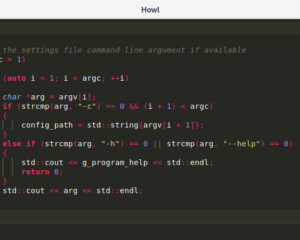This article spotlights alternative tools to vi, a screen-oriented text editor originally created for the Unix operating system.
Read more
The Linux Portal Site

This article spotlights alternative tools to vi, a screen-oriented text editor originally created for the Unix operating system.
Read more
Neovim’s RPC support lets developers create new front-ends (GUIs) for Neovim that are outside of the terminal. We make our recommendations.
Read more
NVUI is a modern frontend for Neovim. It uses the cross-platform Qt widget toolkit. This is free and open source software.
Read more
Neoray is a simple and lightweight GUI client for Neovim. It uses GLFW and OpenGL bindings and is written in the Go language.
Read more
Text editors remain a controversial area. Here are our recommended Vim-like text editors. They are all released under an open source license.
Read more
vimpc is a vi/vim inspired client for the Music Player Daemon (mpd). vimpc is free and open source software.
Read more
Vim is an open source configurable and powerful text editor. It’s an improved version of the vi editor, with development dating back to 1976. This software can be used to write any kind of text.
Read more
VimL is a powerful scripting language of the Vim editor. You can use this dynamic, imperative language to design new tools, automate tasks, and redefine existing features of Vim. Here’s our recommended free VimL books.
Read more
Irrespective of the operating system used, the text editor is one of those quintessential applications for many users. A text editor is software used for editing plain text files. Text editors are used to write programming code, change configuration files, take notes, and more. For this feature, we wanted to select alternative text editors which are definitely worth trying but may have been missed given that they receive less coverage in Linux publications, and are not included or installed by default in many Linux distributions.
Read more